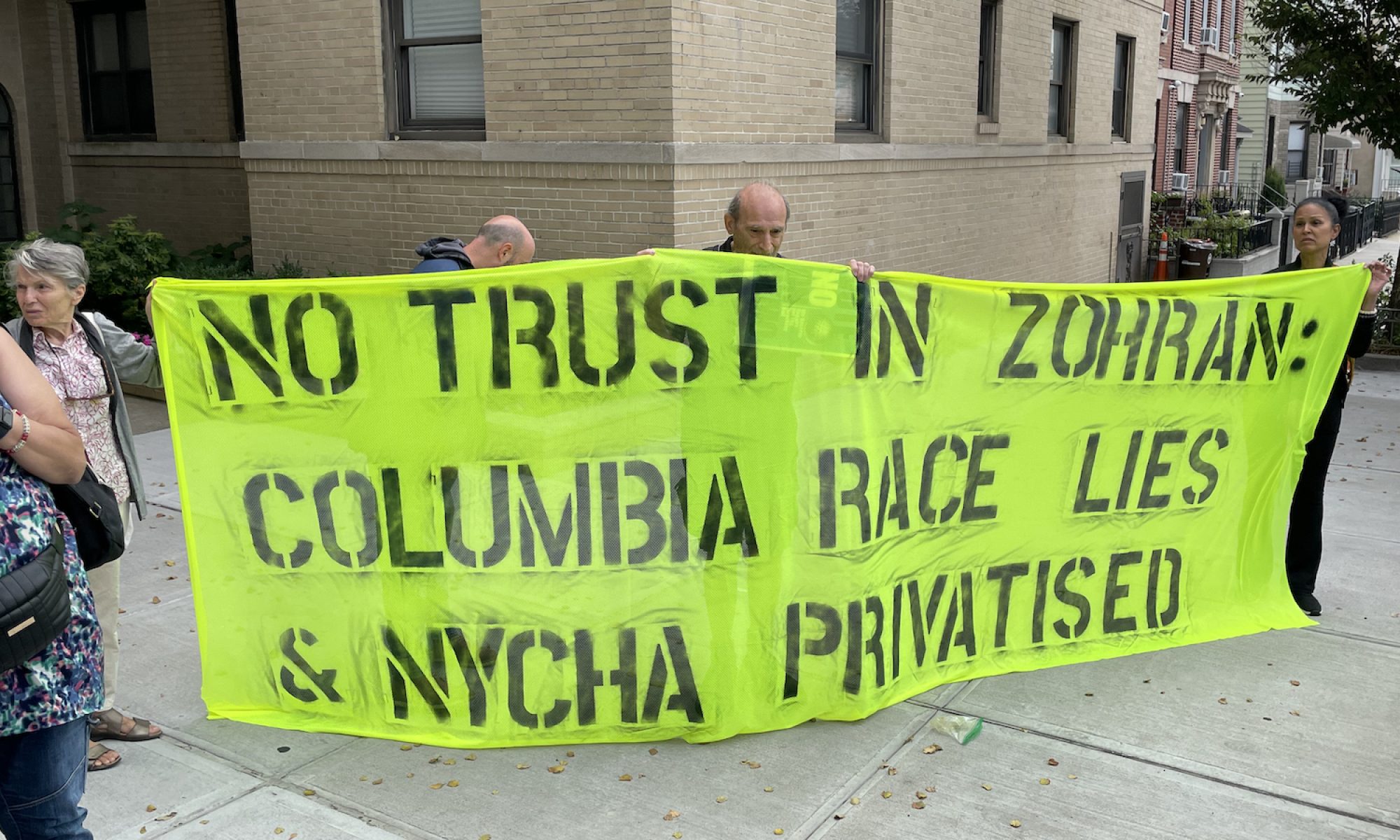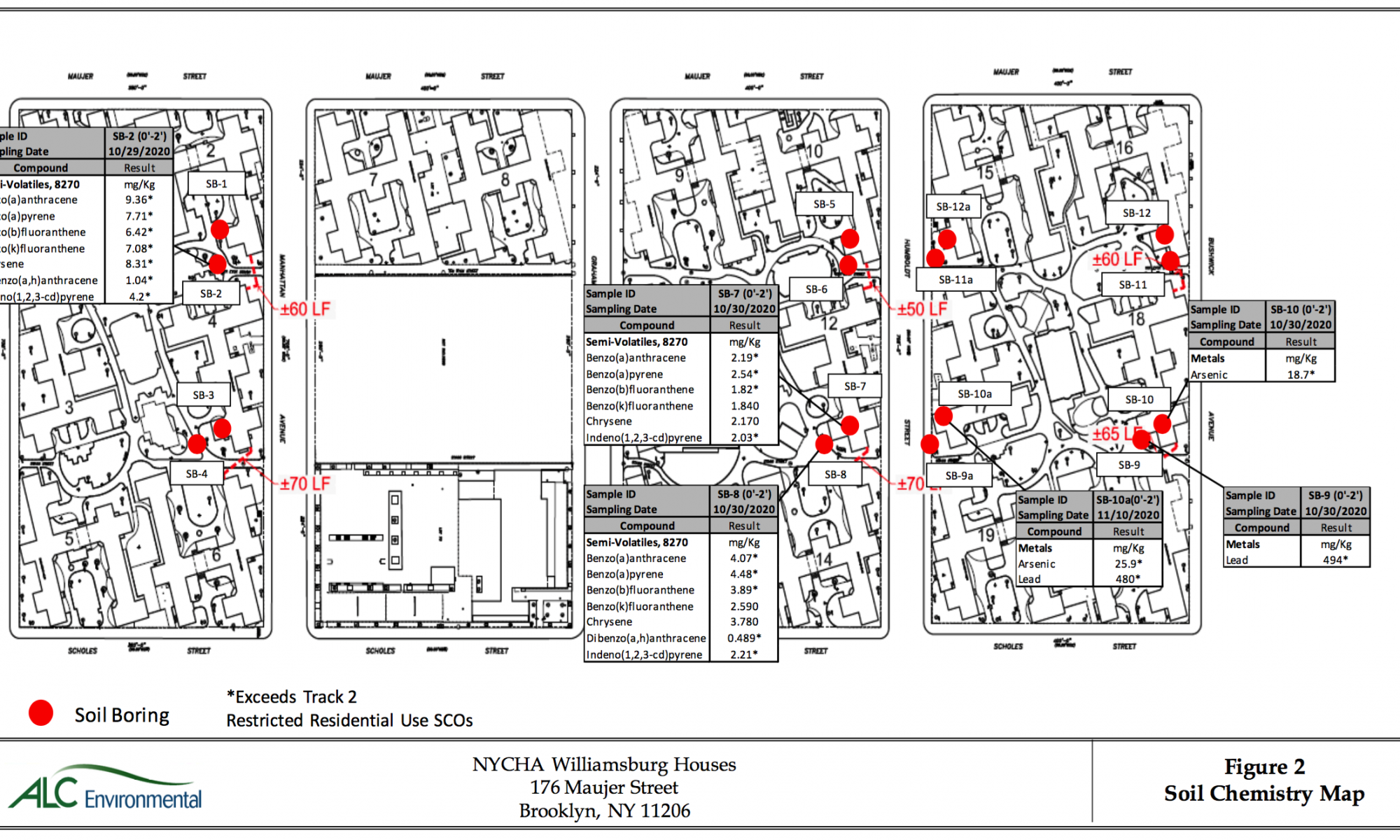The New York City Dept. of Housing and Preservation Development submitted NEPA Categorical Exclusion documents for NYCHA that glossed over environmental issues at Williamsburg Houses, including the possible destruction of Native American burial grounds.
A member of the group, Fight For NYCHA, filed on Thursday an objection with the U.S. Dept. of Housing and Urban Development (“HUD“), arguing five (5) alternative reasons why the National Environmental Policy Act (“NEPA“) Categorical Exclusion documents submitted by the New York City Department of Housing Preservation and Development (“HPD“) as applicant on behalf of the New York City Housing Authority (“NYCHA“) should be rejected.
Under HUD regulations, an applicant can, on behalf of a public housing authority, claim an exception to the requirement that an Environmental Impact Statement or an Environmental Assessment be submitted for public housing developments undergoing changes due to the Rental Assistance Demonstration (“RAD“) scheme. Under RAD, the management of public housing developments can be transferred to private sector landlords, who would collect the rents and HUD subsidies. From those monies, the private sector landlords would pay for at least some of the backlog of capital repairs that accrued due to decades of racist divestment of public housing. RAD has been marketed to unsuspecting NYCHA residents as a panacea. Promises have been made for superficial repairs, like new kitchen cabinets. Public housing residents have been promised that their tenants’ rights would not change. However, that’s not turned out to be true.
Related
NYCHA has a pattern or practise of violating environmental laws or regulations, and the Objection filed with HUD alleged that NYCHA was also violating laws regulating the return of Native American tribal cultural items.
The Objection filed by the group, Fight For NYCHA, alleged that NYCHA had violated the Native American Graves Protection and Repatriation Act of 1990 (“NAGPRA“), which requires Government Agencies receiving Federal funding to return to descendants of, or Native American tribes, items discovered of their cultural heritage, including human remains.
The NEPA Categorical Exclusion documents reveal the possibility that Native American burial grounds may be found at Williamsburg Houses. NYCHA was accused of treating the preservation and treatment of Native American cultural artifacts as possible exigencies instead of an obligation to comply with the law before any of the environmentally-disruptive activities contemplated for Williamsburg Houses were set to begin. A related complaint has been filed with the Office of the Inspector General for the U.S. Dept. of the Interior.
Some of NYCHA’s deliberate acts at violating environmental laws or regulations is a shock to the conscience.
NYCHA has completely ignored revelations that “29 spills and 8 historical cleaners within 1/8 mile ; 45 underground storage tank sites, 8 dry cleaners and 36 aboveground storage tank sites within 1/4 mile ; 44 leaking storage tank sites within 1/2 mile ; and 3 manufactured gas plant sites within 1 mile of the subject property” may have affected the site. Because NYCHA has a long history of violating its own promises of, much less laws regulating, environmental protections, it should come to no surprise that NYCHA engaged in obfuscation in the NEPA Categorical Exclusion documents by limiting the depth of groundwater soil borings to 45 feet bgs. NYCHA acted disingenuously and, therefore, unlawfully, when it failed to conduct adequate environmental studies of groundwater under Williamsburg Houses. After a random check of the elevation of Williamsburg Houses using a Web application, it was revealed that the elevation of the grounds of Williamsburg Houses ranges from 43 feet to 52 feet. When NYCHA conducted inadequate environmental studies of the groundwater specifically designed to fail to encounter groundwater, it was as if NYCHA conducted no groundwater studies at all.
Hazardous waste, chemicals, poisons, or toxins were detected in the soils of Williamsburg Houses, including three pesticides (4,4′-DDD, 4,4′- DDE, and 4,4′-DDT) and several metals (arsenic, copper, lead, mercury, and zinc), which were detected at levels above their respective NYSDEC Unrestricted and/or Restricted Resident Use Soil Cleanup Objectives.

